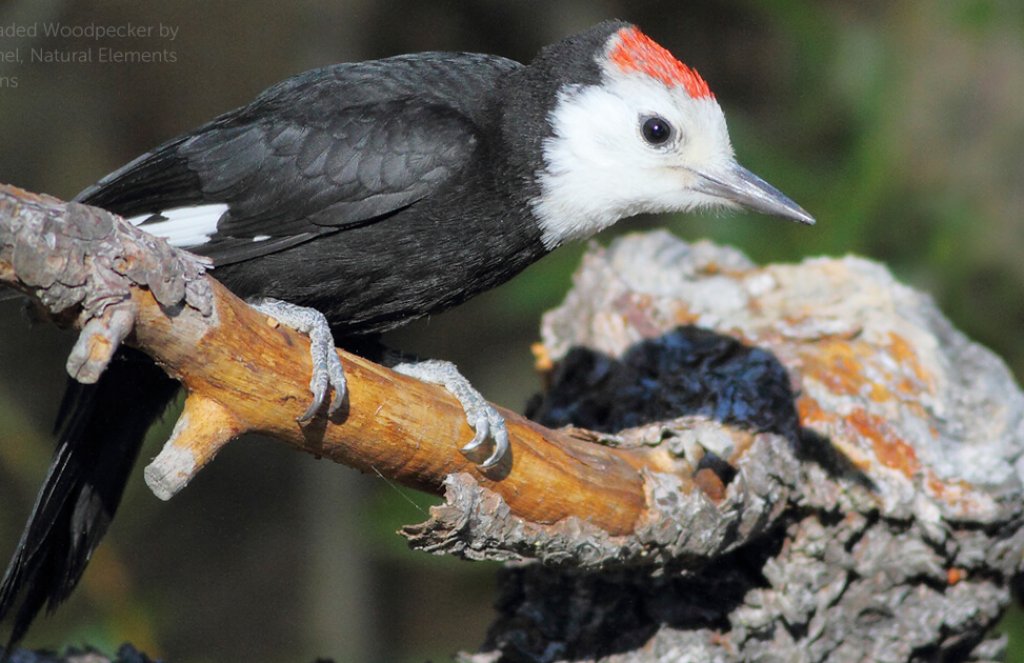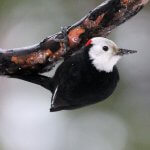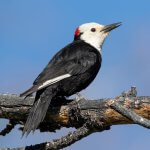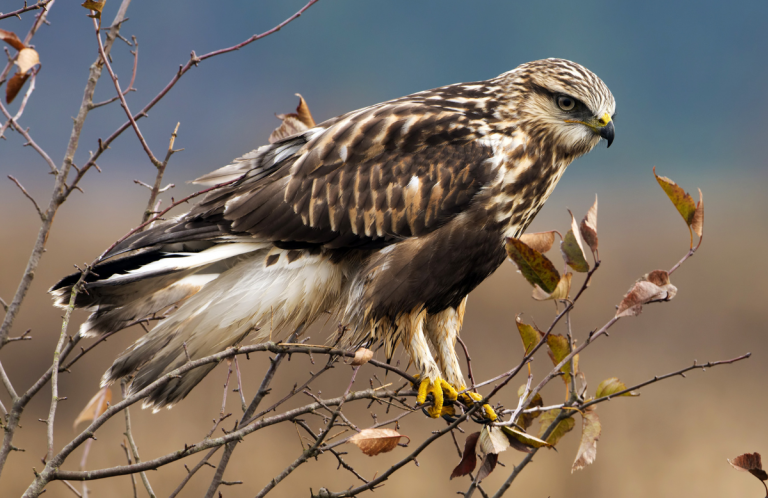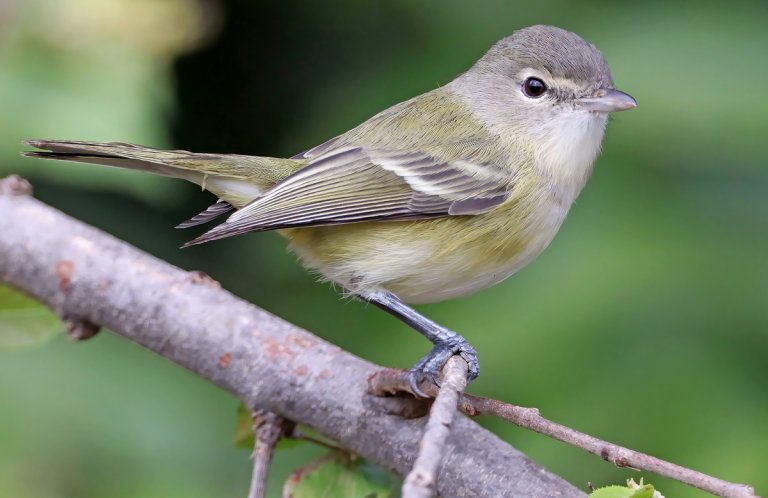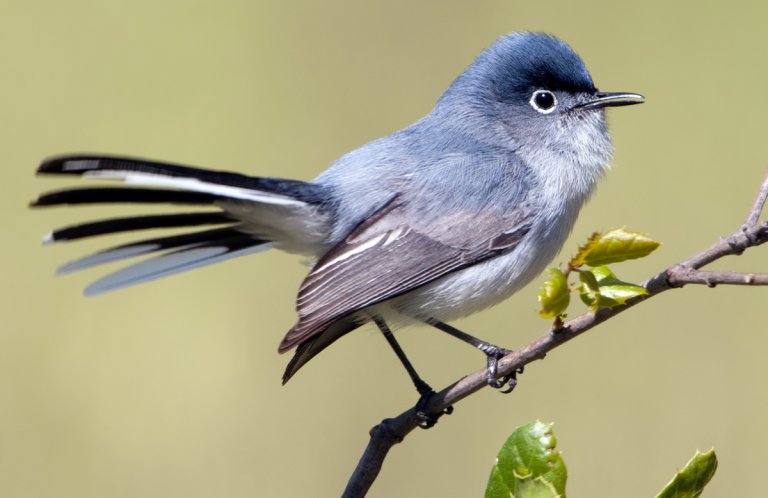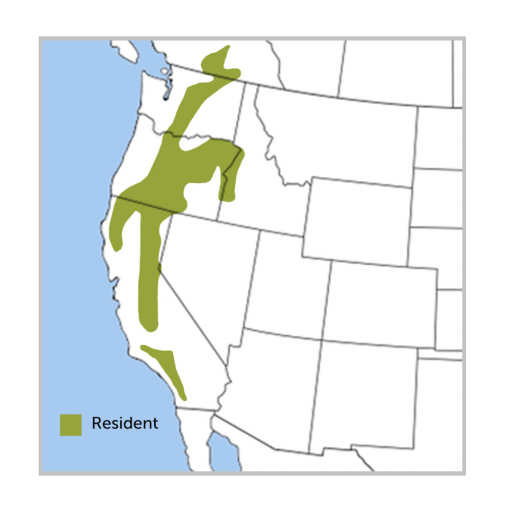
The distinctive White-headed Woodpecker is the only bird species in North America with a black body and all-white head. Both sexes look almost identical except that, like Downy and Hairy Woodpeckers, the male White-headed Woodpecker has a red spot on the back of the head. (Also, during their first summer, juveniles briefly sport a red crown patch.) Despite its striking appearance, the White-headed Woodpecker is a quiet, unobtrusive bird and, as such, can be somewhat challenging to find throughout its range.
Birders who want to spot a White-headed Woodpecker improve their chances by knowing its habitat preferences.
Follow the Fire
To find a White-headed Woodpecker, start by finding places where there has been recent fire disturbance. Like the Black-backed Woodpecker, this species often turns up in recently burned forests, but also requires adjacent areas of large, live conifers — particularly Ponderosa Pines. Dead trees and snags provide soft wood for excavating nest holes, while living trees provide pine nuts, one of the White-headed Woodpecker's favored foods, as well as invertebrates.
Hills Alive with the Sound of Pe-didik
The White-headed Woodpecker is resident (nonmigratory) throughout its range, although some populations move to lower elevations for the winter. It's found in a relatively small area of mountain pine forests from southern British Columbia, Canada, through eastern Washington and Oregon, south to the mountain ranges of California, and east into Nevada and Idaho.
Its most common call is a sharp, rattling pe-didik, often given in flight.
Listen here:
(Audio: Thomas Magarian, XC603290. Accessible at www.xeno-canto.org/603290)
Ponderosa Pine Diner
The White-headed Woodpecker forages quietly, flaking bark from burnt, dying tree trunks and probing into crevices in search of insects, rather than noisily hammering into the wood as other woodpeckers do. This resourceful woodpecker even drills sap wells and drinks sap in the manner of a Williamson's Sapsucker.
The White-headed Woodpecker is the only woodpecker species that feeds heavily on pine seeds, especially those of the Ponderosa, which explains its rather limited distribution. It digs into large, closed cones to extract the seeds, clinging carefully to the sides and bottoms to avoid the sticky sap. Once it extracts a pine seed, the White-headed Woodpecker wedges it into a nearby crack or crevice, then pecks it apart before eating.
Monogamous Mates, Dedicated Parents
The male White-headed Woodpecker courts his mate with an eye-catching aerial display of gliding flights with wings held above his back, accompanied by drawn-out squeaky calls.
Once mated, the pair begins to excavate a nest hole, usually less than 16 feet from the ground in the soft wood of a dead pine tree, snag, fallen log, or even a stump. Pairs excavate a new nest hole each year; old or unfinished nest cavities are used outside of the breeding season for roosting. Once the nest cavity is completed and lined with wood chips, the female White-headed Woodpecker lays three to six eggs, which she and her mate incubate in turn for about two weeks, with the male usually taking the night shift.
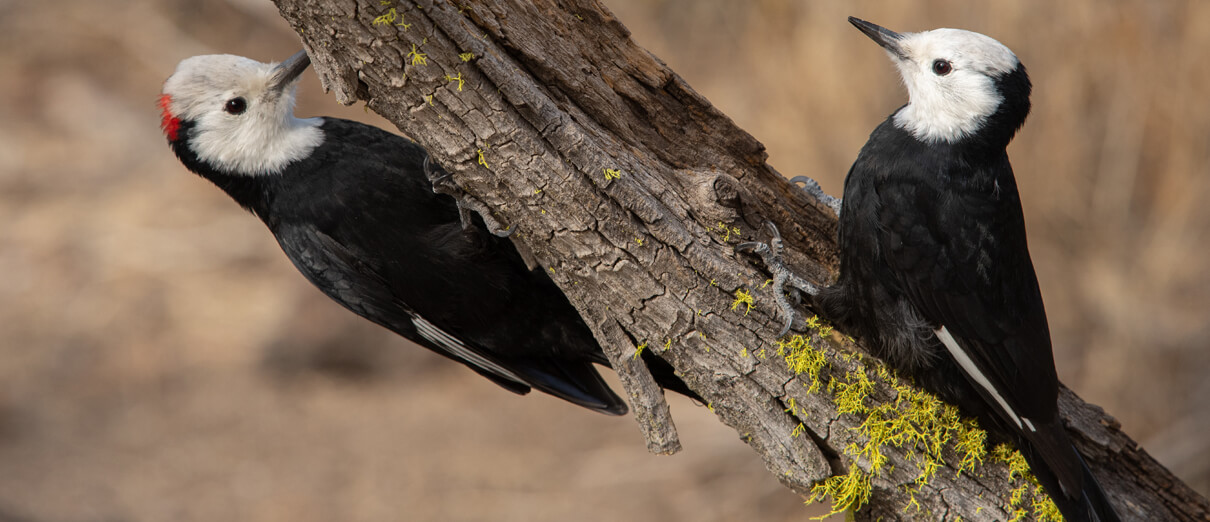
Both parents continue to work in tandem after the eggs hatch, keeping the nest clean and feeding the young birds in shifts. The fledglings continue to depend on their parents for several weeks after leaving the nest. This woodpecker usually raises just one brood per season.
A Very Hot Topic
Fire suppression and salvage logging pose particular threats to the White-headed Woodpecker, as both result in what is essentially habitat loss for this and other species, including the Lewis's Woodpecker and Flammulated Owl. Fire management is a very important topic, especially in the West, where there has been an increase in catastrophic blazes, including the Camp Fire in California in 2018 and the massive Bootleg Fire currently burning in south-central Oregon. The issue of fire, forestry, and birds is complex, but ABC is committed to working with partners and local communities to ensure human safety while safeguarding fire-dependent species such as the White-headed Woodpecker.
Private landowners can help cavity-nesting birds by retaining snags. For those living in Ponderosa Pine country, we have several publications with recommendations for managing habitat. (To see the publications, click links here and here.)
Donate to support ABC's conservation mission!





































